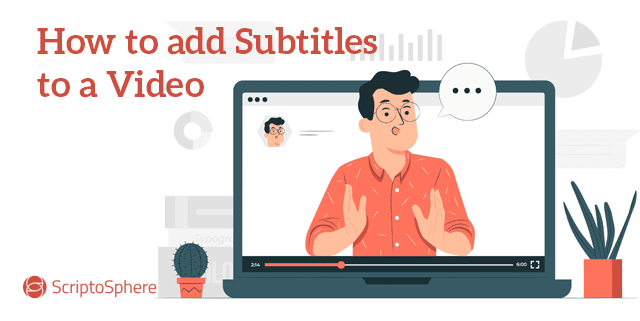Why Add Subtitles to Videos?
Subtitles are no longer optional in today’s digital content landscape—they are a necessity. Here’s why:
- Accessibility: Subtitles make video content accessible to the deaf and hard-of-hearing community, complying with legal requirements and promoting inclusivity.
- Wider Reach: They enable viewers who speak different languages to understand your content, opening up global markets.
- Better Engagement: Videos with subtitles have higher viewer retention, especially when watched in noisy environments or muted on social media.
- Improved SEO: Search engines can index subtitles, boosting your video’s discoverability.
- Learning Enhancement: Subtitles help viewers absorb information better by combining audio and visual learning.
Types of Subtitles
Before adding subtitles, it’s important to understand the types available:
- Closed Captions (CC): Can be toggled on or off by the viewer. Usually include speech and relevant non-speech information (e.g., [music playing]).
- Open Subtitles: Always visible and cannot be turned off.
- SDH (Subtitles for the Deaf and Hard-of-Hearing): Include extra information like speaker identification and sound effects.
- Translated Subtitles: Provide translations for viewers who don’t understand the video’s original language.
Step-by-Step Guide to Adding Subtitles
1. Transcribe Your Video
Begin by converting spoken content into text. This can be done manually or using AI-powered transcription tools like Subtitle Generator by UniFab to save time.
2. Timecode Your Subtitles
Each subtitle must be synced accurately to the video timeline. Use subtitle editors or automated tools to match text with speech timestamps.
3. Format Your Subtitle File
Common formats include .SRT, .VTT, and .ASS. These files contain the subtitle text along with timing information.
4. Embed or Upload Subtitles
- Embedded Subtitles: Burned into the video permanently (hard subtitles).
- Separate Subtitle Files: Uploaded alongside the video on platforms like YouTube or Vimeo (soft subtitles).
5. Review and Edit
Check subtitles for timing, spelling, grammar, and readability. Make adjustments to ensure viewers can comfortably read and follow along.
Best Practices for Subtitling
- Keep Text Concise: Limit subtitles to one or two lines at a time for easy readability.
- Use Clear Fonts: Choose legible fonts and appropriate sizes.
- Maintain Proper Timing: Ensure subtitles appear long enough to be read but don’t lag behind speech.
- Avoid Overlapping Text: Make sure subtitles don’t cover important on-screen visuals.
- Use Proper Punctuation and Grammar: For professionalism and clarity.
- Consider Cultural Nuances: For translated subtitles, ensure the message is culturally appropriate.
Conclusion
Adding subtitles to videos enhances accessibility, engagement, and reach in a way that no other video feature can. Whether you are a content creator, educator, or marketer, subtitles allow you to communicate more effectively with diverse audiences worldwide. With the help of modern AI-powered tools like AI Subtitle Generator by UniFab Video Enhancer AI, adding professional-quality subtitles has never been easier or more efficient. Embrace subtitling as a standard practice to elevate your video content and connect with viewers everywhere.


